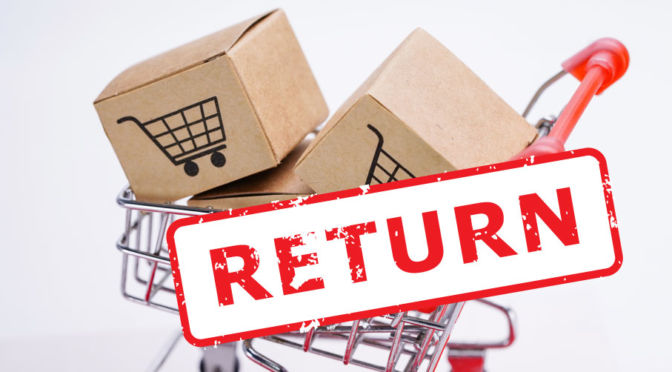Product return issues are issues every online merchants hopes to avoid happening. But what strategies can you implement to mitigate the occurrence of product return issues.
Suppose you are selling jewelry on your ecommerce website, and you website is demonstrating a pretty good conversion rate, and visitors are really purchasing your products.
However, your business has a quite high return rate, let us say around 15-20%.
You do understand that customers are usually more sensitive when buying jewelry due to incorrect size and the high price, but there are a few serial returners who are killing your profit and loss statement. There are even those customers who say that they did not receive products when you actually delivered the correct products to their front door.
Let’s get some perspective about product return issues:
Way back in 2007 a research conducted by accenture about p&l on electronics averaged between 11 and 12 percent that year. The cost to manage that returned merchandise reached $13.8 billion. I can only imagine how that figure is in 2019. Below is the figure for 2015 to 2018 from eMarketer, Star Business Journal, and Forrester.

What ever strategies you implement, returns will still occur. How are you dealing with product return issue for your business is more important.
So, what are you going to do? What strategies can you implement to mitigate your loses. In terms of solutions to this issue, I can straight-away think of buying a shipping insurance as a back-up against possible missing items or malicious buyers. LOL!
Here are a few simple steps to Instantly Deal With Product Return Issues
Market the right features.
Most of product returns are the result of incorrect product features that the website says about the product yet does not exist or different in the actual product received.
Implement User Generated Content
Implement a way for your ecommerce to generate UGC(user generated content), like a way for them to ask questions before purchasing.
The best way to find out what the customers want is to ask them. Paying attention to the questions and responses, and acting on them will help minimize returned merchandise.
Keep tabs on the competition can also be useful.
“Shop your competition frequently to see what their hot sellers are,” suggests Tom Hebrock, vice president of retail services at Stuart and Associates in Brentwood, Tenn.
Study and review your marketing and sales efforts.
you can do some research and find out why that certain % are returning the items. Is your messaging unclear. Are you including a size chart for your products?
Check the Consistency of your SKUs across all channels.
Check your SKUs and make sure they are consistent across all channels. You should take a look at some inventory management software if you’re not currently using any. This will help map your SKUs and bring everything into one system. That will means you’ll save time and speed up returns.
Clear up Your Return Policy
You should also take a look at your returns policy. Don’t make the process inconvenient to your customers. You want to keep your customers happy. Simplified returns instructions and printable labels can help.
If you are selling internationally you have to be prepared to service internationally. Maybe look at the international carrier for all your shopping or using parcel forwarding in a number of countries.
Require Signature upon Delivery to mitigate product return issues
Another thing, for sure, you should do is require a signature upon delivery. That makes it pretty hard to claim they never received the merchandise.
Encourage customer reviews
When Petco, the pet-supply chain, engaged BazaarVoice to help facilitate customer reviews on its Web site, the stores’ return rate immediately went down 20 percent. Petco continues to use it three years later — a tribute to the success of the program.
When the chain offered a $100 gift certificate in a sweepstakes open only to customers who had posted reviews, it realized an 800 percent increase in customer reviews.

“More customer reviews drive higher sales, lower product returns and more search-engine traffic,” says Sam Decker, chief management officer for BazaarVoice in Austin, Tex. “Getting your customers interactively involved in your Web site benefits everyone involved.”
The more reviews a product gets, the better. A product with 50 reviews has a 135 percent lower return rate than products with fewer than five reviews.
“This new data is another sign that Ratings & Reviews (the BazaarVoice system) are providing customers with the information they need to make the right purchasing decisions,” says John Lazarchic, vice president of eCommerce at Petco.
Establish Relationship through After Sales
It’s also a very good idea to have sales associates make a follow-up call to see how the product is working. An added benefit of this tactic is that it helps a retailer establish a relationship with its customers.
Start a Simple After sales steps you can do right away:
- Send an acknowledgement – a simple thank you note acknowledging the sale and hoping for a continued association will do,
- Ask if they need any help with their purchase (if it is an appliance, they may need help in setting it up),
- Offer follow-up services in case of products that are a regular buy (like groceries),
- Ask for feedback and work on any pain points.
Please dont forget to share your comment or share this article to social media websites by clicking on the share buttons below. You may rate this too, we would like you to.







